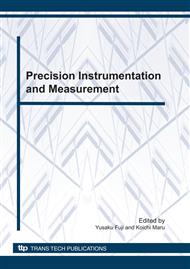p.311
p.317
p.323
p.329
p.337
p.344
p.349
p.355
p.360
Method Evaluation Computer Program for Quantitative Analysis of PBBs and PBDEs in Plastics
Abstract:
Polybrominated biphenyls (PBBs) and polybrominated biphenyl ethers (PBDEs) are substances used in electrical and electronic products. They are restricted substances due to their potential risk to human health and the environment. In this research work, a test method was evaluated for the quantitative analysis of polybrominated diphenyl ethers (PBDEs) and polybrominated biphenyls (PBBs) in acrylonitrile-butadiene–styrene (ABS) plastic and polyethylene materials, based on solvent extraction of a plastic sample with soxhlet extraction techniques and detection by gas chromatography/mass spectrometry. We have also developed a computer program for checking the suitability of the analytical method by evaluating validation characteristics, including accuracy, precision, specificity/selectivity, limit of detection (LOD), limit of quantification (LOQ), linearity, range and sensitivity. The computer program was successfully applied for evaluation of the analytical method for prohibited PBBs and PBDEs in plastics. Graphical charts for the evaluation of the analytical method are presented along with their values, and researchers can get insight into evaluating several parameters together. It was found that the analytical method was able to quantify monobrominated - decabrominated biphenyl and monobrominated diphenyl ether–nonabrominated diphenyl ether between 100-1750 mg/kg and decabrominated diphenyl ether between 100–8,000 mg/kg. In addition, ERM-EC590 Polyethylene certified reference material from the Institute for Reference Materials and Measurements (IRMM) was used to validate the analytical method for PBBs and PBDEs in plastics. The obtained accuracy and precision indicate that the method successfully meets the required accuracy expressed as % recovery (70-130%) and the required precision expressed as percentage relative standard deviation (less than 20% RSD) of the IEC 62321:2008 international standard method.
Info:
Periodical:
Pages:
337-343
Citation:
Online since:
October 2010
Authors:
Price:
Сopyright:
© 2010 Trans Tech Publications Ltd. All Rights Reserved
Share:
Citation:


